Uluburun II – A Cargo Vessel of 1300 BC
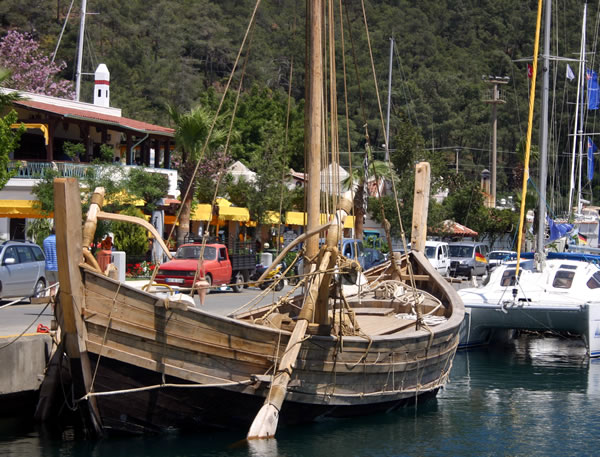
These days Netsel Marina in Marmaris is host to a most unusual vessel. Grantedly, if we would disregard the two side rudders in plantane timber, several stone anchors and of course a massive square sail, she is perhaps not even too different from the cargo vessels of the Med, which have served as late as the second half of the twentieth century. But still, who sails nowadays such a vessel?
This project is the brainchild of a dedicated group of scientists of various disciplines and of craftspeople, the 360DERECE group. Their aim is to rebuild and to reconstruct historic vessels and their program is diverse: Next to this replica of the Antiquity, the famous “Kayik”s of Izmir; a “Triremes”, a galley of the Antiquity; a “Tirhandil”, the trading and sponge diver vessels of the Aegean – all these are their objects of interest.

The Uluburun wreck was discovered by a sponge diver, Mr. Mehmet Cakir in 1982 off Uluburunclose to Kas (N 360 07,9′ E 0290 41,0′). Its stern rested at 44 m, the bows at 52 m. Some artifacts had been spilled down to 62 m. The National Geographic Society provided the means to excavate her and in 1984 work started by the team of Prof. George Bass of Texas A&M University. After an incredible number of more than 22.400 dives mankind has managed to rebuilt the puzzle sufficiently in order to attempt a reconstruction, the Uluburun II.
The antique vessel sank in a storm around 1300 BC. At that time mankind was still in the Bronze Age, steel had yet to be discovered. And indeed her main cargo were copper and tin ingots, the raw materials for bronze. Next to the main cargo a huge number of very valuable artifacts, including the seal of Queen Nofretete of Egypt could be salvaged after the “long sleep”. The excavated remains of the original vessel rest today in the Bodrum Museum for Underwater Archaeology in the Crusader’s Castle. For the wreck site location click map to the right.
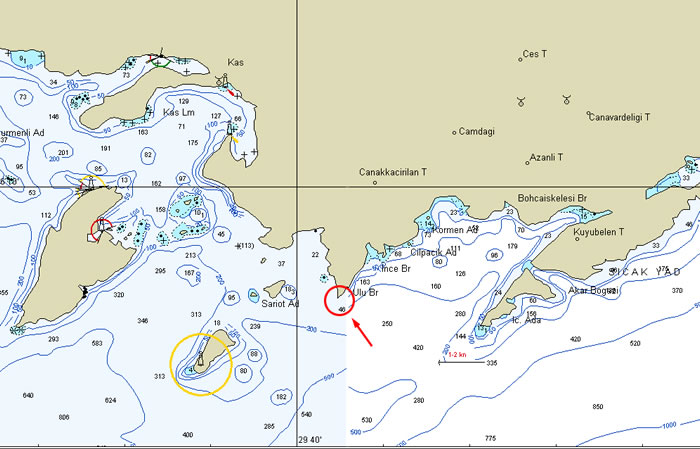
For more information about the the Uluburun II project and about the 360DERCE group, please click here.
For more information about the the Uluburun Wreck please click here.
Below please find pictures of the vessel, which is presently preparing for a ring tour of the Eastern Mediterranean.
Fair Winds, Uluburun!
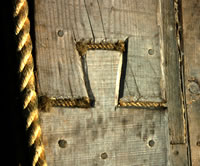 |
The “Swallows Tail” scarph, caulked only where caulking makes sense. These and other details show that already in the Bronze Ages in the Eastern Med vessels of high sophistication were built. | |

|
View into the holds. Today it doubles as a cozy cabin for the crew. |
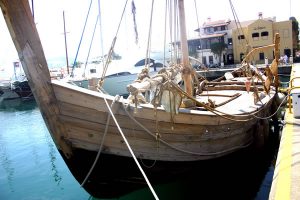 |
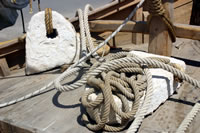 |
The famous stone anchors. 1300 BC – even the wood anchor yet to be discovered. | |
 |
Two sophisticated and huge side rudders, similar to oars serve to control the vessel. They are made of plantane timber. The rest of the vessel is made of pine, in lieu of cedar, extinct in the Lebanon and under protection on the Turkish Taurus mountains. | |
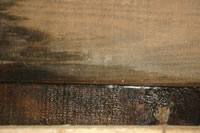 |
Leaking caulking – the ancient mariner had to fight these leaks as much as todays seamen. | |
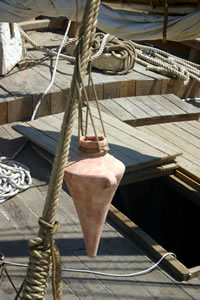 |
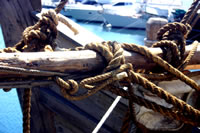 |
|
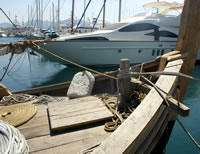 |
New meets old. An Azimuth motor cruiser in the background, the plough anchor next to the stone one. | |

The “Tabled and Hooked Scarph” or the “Phoenician Scarph” of the Romans, a principal shipbuilding element still today.
|
“SCARF or SCARPH, the joing of two timbers by bevelling off the edges so that the same thickness is maintained throughout the length of the joint. In the construction of a wooden ship, the stem and sternposts are scarfed to the keel. A scarf which embodies a step in the middle of the joint, so preventing the two parts from drawing apart, is called a lock scarf. It is a joint of great antiquity, having been used by the early Egyptian and Phoenician shipbuilders.” The Oxford Companion to Ships and the Sea, p. 756 |

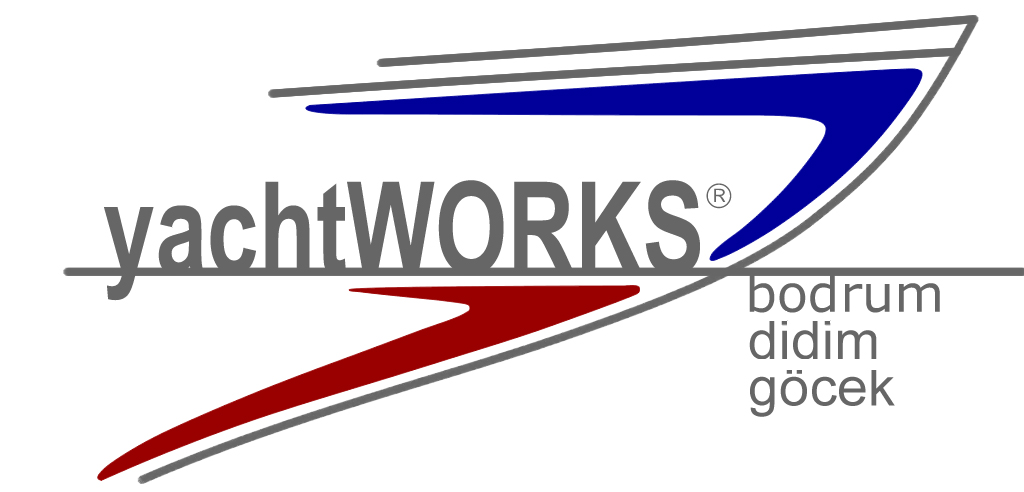

 Turkish
Turkish Deutsch
Deutsch Русский
Русский